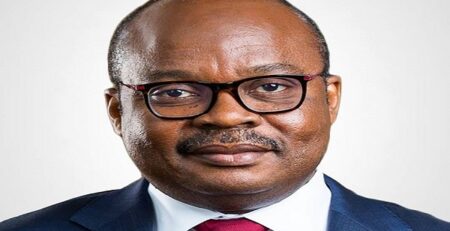Banks are leaving private sector, govt without the financing they want
…lending to private sector slows
…Investment in debt securities out of sync with govt’s issuances
The latest data emanating from the Bank of Ghana through its Banking Sector Developments Report dated April 2021 shows how Ghana’s banking industry has gone about major restructuring of the respective balance sheets in response to the impacts of COVID 19 on the economy. The restructuring of their assets and liabilities has basically aimed to protect the quality of the assets to ensure that they can meet their liabilities – translate as the monies of depositors left in their custody, the equity investments of their shareholders and any monies owed to suppliers and lenders – and they have also taken steps to ameliorate the inevitable dampening effect of this on banks revenues.
This has had major implications for both private sector borrowers and the government, both of which rely on the banks for financing; the first in the form of loans and the second in the form of investments in cedi-denominated domestic debt securities comprising treasury bills, notes and bonds.
Most importantly the new data confirms that the slowdown in bank lending brought about by the impacts of COVID 19 has continued into 2021 as a second wave of infections surges.
The new data shows that gross loans outstanding grew by just 3.6 percent over the 12 months up to February 2021 compared with 26.0 percent growth over the previous 12 month period which instructively was the one year immediately preceding the arrival of the pandemic in Ghana. Adjusting gross loans for loan-loss provisions and interest in suspense, growth in net loans by the banks was 2.27 percent over the one year up to February 2021, down from 27.2 percent growth over the previous one year period.
By the end of February, net loans outstanding amounted to GHc41.4 billion. The extent of the slowdown in loan book growth is further illustrated by the fact that during the first two months of this year only GHc4.7 billion in new loans were booked, 24.6 percent less than the GHc6.2 billion in new loans given during the first two months of 2020 which were the last two pre-COVID 19 months.
The slowdown has occurred despite faster growth in banking industry total assets which grew by 18.5 percent over the 12 months up to February 2021, faster than the 17.8 percent growth achieved over the preceding one year period.
However, most of the new assets have gone into less risky government securities as banks have shied away from risk assets – particularly loans – as the effects of COVID 19 have made it more difficult for borrowers to service the loans they take. Indeed, in recognition of this customers have actually reduced their demand for credit too.
Consequently, investment holdings by the banks increased by 45.9 percent over the 12 months up to February this year, to reach GHc67.9 billion; this being nearly ten times the 7.2 percent growth rate in investments recorded over the previous one-year period.
While, during the latter part of last year, banks were moving from the shorter end of the securities investment spectrum towards the longer end to take advantage of the positive yield curve, they generally reversed their stance during the first two months of this year, improving their liquidity positions albeit at the expense of their profitability levels.
However the BoG’s new report does not capture the very latest development which is crucial to government’s public debt management strategy – over the past two months the banks, apparently satisfied with their liquidity positions, and worried about how the reduction in lending is affecting their interest income and consequent profit levels, have once again returned to preferring longer dated government debt securities over shorter tenured ones, since the latter offer significantly higher coupon rates and secondary market trading yields.
Consequent to banks balance sheet restructuring, by the end of February this year, their collective investment portfolio accounted for 44.7 percent of their cumulative total assets up from 36.3 percent a year earlier.
With regards to the slowdown in lending, banks have reacted to the inevitable deterioration in loan asset quality, as well as the lessened perceived creditworthiness of borrowers. Instructively the industry has actually shrunk its loan portfolio to the public sector, which contracted by 23.6 percent over the one year up to February 2021 in reverse of 66.8 percent growth over the previous 12 months, with banks obviously wary of government’s deteriorating fiscal position.
The industry’s non performing loans ratio by February this year stood at 15.3 percent, up from 14.8 percent where it was both a year earlier and by the end of 2020. However, accounting for fully provisioned non performing loans, the ratio falls to 6.6 percent, from 5.2 percent a year earlier. Nevertheless, the increase in the gross NPL ratio reflects a 15.1 percent deterioration in loan asset quality over the one year period up to February 2021. This deterioration was felt mostly in the agriculture/forestry/fishing sector; the transport/storage/ communications sector; the mining and quarrying sector; and the services sector.
However, the services sector still accounted for the largest portion of the industry’s loan portfolio, by February this year at 27.5 percent, followed by the commerce and finance sector at 24.4 percent, manufacturing at 10.7 percent, construction at 9.5 percent, transport/storage/communications at 7.8 percent, mining and quarrying at 7.4 percent, electricity/water/gas at 7.1 percent, miscellaneous at 7.0 percent, and agriculture/ forestry/fishing at 3.6 percent.
Despite the lending slowdown however the Bank of Ghana is confident that the banking industry has the capacity to finance the anticipated economic rebound this year due to strong balance sheet growth funded in part by even stronger growth in shareholders’ funds which increased by 21.2 percent over the 12 months to February 2021 to reach GHc22.2 billion.
Indeed, by February this year, Ghana’s banking industry had a capital adequacy ratio of 20.2 percent which is nearly twice the 11.5 percent minimum insisted on under BASEL.
But the move from lending to investments has had a dire effect on banks profit levels since lending offers substantially higher interest margins than their investments in debt securities; this in line with the core correlation between risk and reward. Illustratively, if a bank has an un-weighted average cost of funds of, say, 10 percent it can lend at an average of 25 percent and make a handsome interest margin of 15 percent. However, that interest margin falls sharply to less than four percent if a bank invests in 91 day or 182 treasury bills at the current coupon rates.
Since up to three quarters of banks entire income derives from interest income (most of the rest comes from fees and commissions), the reduction in net interest due to narrowed interest margins has had a major impact on their net income.
Growth in profit after tax slowed to 5.9 percent in January and February, from 38.8 percent during the corresponding period of 2020. Instructively the BoG attributes this primarily to a 9.5 decline in interest margins received by the bank to 9.5 percent as at February this year, down from 22.0 percent a year earlier. Resultantly, net interest income growth declined from 25.9 percent over the 12 months up to February 2021 to 10.9 percent over the previous one year period.
The situation has been compounded by a slowdown in growth in income from fees and commissions to 13.7 percent, down from 18.4 percent over the previous one year period, due to slower lending growth, disruptions to supply chains which have dampened trade finance fees and a slump in other off-balance sheet transactions
In line with the increase in banks’ investment holdings, interest income from investments remained the largest source of banks’ income, with its share increasing to 51.1 percent in February 2021 from 42.5 percent in the previous year.
Interest income from loans was the second-largest source of banks’ income but its share declined to 31.1 percent from 38.7 percent, reflecting the slowdown in credit growth.
The share of fees and commissions however increased marginally to 12.3 percent from 11.7 percent over the same comparative period while the share of other income sources declined to 5.5 percent from 7.2 percent.
The slowdown in profitability growth is coming at a time that shareholders, having recently had to finance the biggest recapitalization in the banking industry’s history, were expecting much bigger profits and even the arrival of COVID 19 has not dampened those expectations.
Therefore, to restore their narrowed interest margins, without having to return to relatively risky lending to customers, the banks are simply extending the tenors of the cedi denominated domestic debt securities they invest in, substituting short tenured securities with longer tenured securities and relying on the now vibrant secondary market in the form of the Ghana Fixed Income Market (GFIM) to give them liquidity whenever they need it.
The immediate consequence is that government has missed its Treasury bills issuance targets for the past four consecutive weeks as investors demand less than what is being offered them with regards to the shortest tenured securities – 91 day and 182 day treasury bills – even as they demand more longer tenured securities than what is being offered.
The past four weeks have seen liquidity tightened on the interbank market but market analysts attribute the slightly below target performance of public debt security issuances to government’s strategy of lowering short term rates relative to rates on longer tenured securities.
The results of the tender a fortnight ago clearly illustrate the unfolding situation. Government mobilized a little above GH¢1.003 billion cedis collectively on its issuance of 91 and 182 day treasury bills about 11% below the targeted amount of GHc1,135 million.
However, the interest cost of the 91-day T-Bills fell slightly by one basis point though that of the 182-day bill went up by four basis points.
It accepted all the bids from the investors, mostly commercial banks.
Conversely government received GH¢785.92 million worth of bids for its one-year treasury note – which was well above target – but although it is seeking to lengthen the maturity profile of the public debt it prudently accepted slightly less than what was demanded.
This is because the interest cost, at 16.52%, was significantly higher than the 12.57% and 13.57% for the 3-months and 6-months bills respectively.
Indeed, this explains the new stance of investors who are seeking to maximize their returns on investment by opting for loner tenured securities which offer significantly higher coupon rates. Because of the high liquidity and trading volumes for such securities on GIFIM, investors no longer get their liquidity locked up in such securities since they can be sold whenever an investor needs liquidity.
This may force government to rethink its interest rate strategy which is being executed through its banker: the Bank of Ghana. The central bank, on behalf of government; has sought to lower short term rates which guide the cost of credit for local borrowers who themselves borrow primarily short term; while leaving medium to long term rates relatively high in order to attract foreign investors (who are only allowed to invest in cedi denominated government securities with tenors of two years or more) who generally accept lower offered coupon rates than their indigenous investor counterparts and who bring in direly needed foreign exchange to fund their investments too.
But with the evolving new stance on tenors by local portfolio investors. Government may be tempted to reduce the interest rate differential between short tenured securities and longer tenured securities in order to keep a lid on its interest costs as its average public debt tenor lengthens.
But until that happens banks in Ghana will continue going for longer tenured debt securities in the confidence that their liquidity concerns are adequately addressed. Instructively, the industry’s liquidity ratio is stronger than it was a year ago, the result of the move from lending to tradable securities and a buildup of cash and other short term funds, itself a prudent reaction to the initial run on deposits that occurred a year ago when government announced a partial lock down of Accra and Kumasi to curb the spread of COVID 19.
The biggest concern now though is that bank financing will be needed to fund the anticipated economic rebound this year. The central bank is considering renewed monetary easing to support it (although impending inflation due to expected sharp increases in transport costs may force it to suspend further easing for now), but the banks are more concerned with the width of the interest margins than with the nominal levels of lending and deposit rates.
For now, this means both the private sector and government itself are not getting the financing they want; the former in terms of quantum and the latter in terms of tenors. The BoG’s Monetary Policy Committee will have its work cut out before its next scheduled regular meeting at the end of this month.
Source:Goldstreet Businesss














Leave a Reply